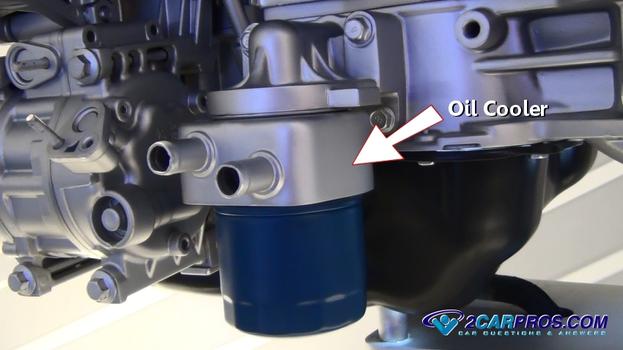Oil In Coolant Or Radiator
Oil in Coolant
Engine Oil Getting Mix With Coolant
Engine Oil In Radiator
Helpful Information
These fluids may exchange places when these items fail due to pressures inside each system. Because engine and transmission oil pressure runs at about 40 psi and cooling system pressure runs about 18 psi oil is more likely to enter the coolant system rather than coolant entering the engine or transmission through the cooler.
Step by step guide on how to troubleshoot and repair an automotive oil in coolant problem, this information pertains to most vehicles.
Difficulty Scale: 4 of 10
Begin inspection with the vehicle on level ground, engine "OFF" and cooled off, in park with the emergency brake set.
Step 1 - Many automotive engines utilize an oil cooler in which radiator coolant passes through to remove heat from the oil. When these coolers fail they allow engine oil to enter the cooling system and into the radiator.

Oil Cooler
Step 2 - To check for this condition wait until the engine has cooled off and remove the radiator cap to inspect, the oil will float on top of the coolant and is easily detected.

Oil in Engine Coolant
Step 3 - Automatic transmission equipped vehicles utilize an automatic transmission fluid cooler located inside the radiator.

Transmission Oil Cooler
Step 4 - When this cooler fails it allows transmission fluid to enter the coolant portion of the radiator causing transmission fluid levels to be low while creatingoverheating problems for the engine.

Transmission Fluid in Radiator
Step 5 - Occasionally the head gasket can fail forcing oil pressure into the cooling jackets of the block or cylinder head. If all other testing has failed, the cylinder head must be removed for inspection of the gasket.

Oil Cooler

Oil in Engine Coolant
Step 3 - Automatic transmission equipped vehicles utilize an automatic transmission fluid cooler located inside the radiator.

Transmission Oil Cooler

Transmission Fluid in Radiator
Comments
Post a Comment